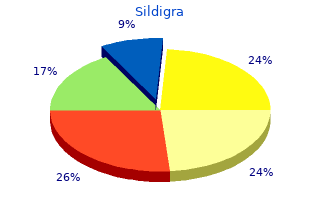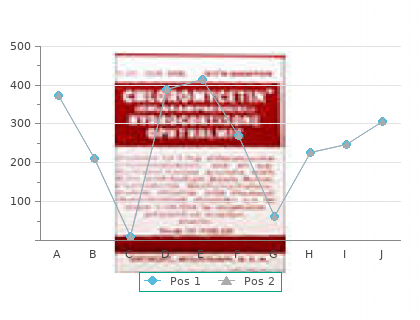Sildigra
By J. Giores. Gustavus Adolphus College, Saint Peter, Minnesota. 2018.
The athlete should These patients will need surgical drainage and IV broad then follow up with a dentist immediately for defini- spectrum antibiotics immediately 50mg sildigra otc erectile dysfunction pills made in china. The PDL and alveolar bone are destroyed by most suitable transport medium is Hank’s balanced bacterial plaque generic 120 mg sildigra visa impotence of organic origin meaning. Athletes with evidence of periodontal salt solution (HBSS) because of its pH-preserving disease should be referred to the care of a periodontist. Save-a-Tooth Dental decay or caries is caused by oral bacterial dem- (Biologic Rescue Products, Conshohacken, PA) is one ineralizing tooth enamel and dentin. HBSS should be readily avail- tion from the fermentation of dietary carbohydrates able at schools, emergency rooms, athletic coach by oral bacteria demineralizes the tooth. Cool milk has been shown to work as a better medium than PREVENTION warm milk. Also, getting the tooth into a medium within the first 15 min increases cell survival and Aproperly fitted mouth guard should be protective, com- reimplantation success (Trope, 2002). Mouth guards are worn in greater than 30 min decreases chance of survival. On the contrary in basketball where mouth 90% chance the tooth will be retained for life guards are not routinely worn oral facial injuries are 34% (Douglas and Douglas, 2003). The American Dental Association (ADA) Primary avulsed teeth should not be reimplanted estimates mouth guards have prevented 200,000 injuries because this could injure the permanent tooth follicle per year. A properly fitting mouth guard will protect the (Douglas and Douglas, 2003). The tooth will then have localized pain and considered bulky and have little retention. Referral to Boil and bite mouth guards are the most common on dentist for either a root canal or extraction is needed. The mouth guard is immersed in boiling Pain medication may be given but antibiotics are not water and formed in the mouth by fingers, tongue, and necessary (Douglas and Douglas, 2003). This mouth guard does not cover all An apical abscess is localized, but if not treated a cel- the posterior teeth decreasing the protective qualities lulitis may follow. This infection may spread into the fascial Custom mouth guards are made by a dentist after a spaces of the head and neck possibly causing airway complete dental examination and proper questioning. The infection may spread to the periorbital An impression is taken of the athlete’s mouth allow- area with complications such as loss of vision, cav- ing the dentist to make a stone cast of the mouth. A ernous sinus thrombosis, and central nervous system single layer thermoplastic mouth guard material is (CNS) involvement. A vacuum custom mouth guard be placed on antibiotics and incision and drainage can be made in the office. CHAPTER 31 INFECTIOUS DISEASE AND THE ATHLETE 173 Increased evidence has shown that a multilayer guard or laboratory pressure laminated may be preferred to REFERENCES a single layer. These can either be made by the dentist in office if proper materials are available or need to be Cohen S. Louis, MO, When properly worn helmets and facemasks will Mosby, 2002, p 605. Am Fam sports: acrobatics, basketball, boxing, field hockey, Phys 67:3, 2003. Kenny DJ Barrett EJ: Recent developments in dental traumato- football, gymnastics, handball, ice hockey, lacrosse, logy. J Public Health Dent 58:289, squash, surfing, volleyball, water polo, weightlifting, 1998. Lee JL, Vann WF, Sigurdsson A: Management of avulsed perma- Injury rates in football rates have gone from 50% to nent incisors: A decision analysis based on hanging concepts. Phys Sportsmed Compliance can be a problem with mouth guard use— 28:1, 2000. DENTAL MAINTENANCE Trope M: Clinical management of the avulsed tooth: Present strategies and future directions. An initial compre- hensive dental examination should be performed, including chief complaint, health history, intraoral and extraoral examination, and radiographs where appli- cable; then the dentist will recommend a recall sched- 31 INFECTIOUS DISEASE ule as needed dictated by the evaluation.

When tissue destruction prevents the use of local or distant flaps and when cheap 100 mg sildigra amex erectile dysfunction on molly, necessary for reconstruction buy sildigra 25 mg on line erectile dysfunction pump pictures, free flaps are indicated for treatment of burned hands. Using microsurgical techniques, it is possible to transfer in a single surgical procedure the tissue necessary for optimal coverage of the exposed blood vessels, nerves, tendons, joints, or bones. This helps reduce the risk of deep infection and necrosis of the exposed soft tissue structures and facilitates early movement of the burned extremity. This is especially relevant for the treatment of patients who have suffered high-voltage electrical burns of the upper limbs. Coverage of the burned hand requires the use of tissues that are not very thick. The existence of this with a fascial component in the flap that allows sliding of the exposed deep structures is another advantage of free flaps. The free radial fasciocutaneous flap, described by Yang in 1981, provides excellent coverage with a thin, pliable tissue with a fascial component on its deep surface. Its vascular pedicle is constant, of large caliber, and has supplementary drainage through the superfi- cial veins of the forearm. This type of flap is contraindicated when the Allen test shows insufficient vascular supply from the cubital system and the posterior interosseous of the hand [26,47] or when the skin of the donor region of the forearm has been burned. We do not reconstruct the radial artery after extracting the flap, and we have not observed any case of poor perfusion of the hand of the donor extremity. In occasional cases, scarring of the flap donor area is delayed, with partial losses of the cutaneous graft; it is usually sufficient to administer topical treatment alone to promote wound closure. For a detailed description of the anatomy and steps of operation for extraction of this flap and those to follow, we refer the reader to the text on microsurgery by Dr. In Figure 6, we present an example of the use of the free radial fasciocutaneous flap for coverage using a single surgical procedure of a deep burn on the palm of the hand. The functional results in the long term were excellent, with stable and sensitive coverage. Of the free muscular flaps, the free flap of the anterior serratus muscle, described simultaneously in 1982 by Buncke and by Takayanagi, provides great plasticity and a constant vascular pedicle of good size and length. When covered with a cutaneous graft, stable and long-lasting coverage is achieved. We use the last three muscular digitations for coverage of hand burn injuries that are not very extensive and that require coverage with high vascular density per gram of tissue supplied. They are especially indicated for coverage of high-voltage electrical burn wounds of the wrist, which may sometimes be corrected in associa- tion with nerve grafts in the same procedure (Fig. We emphasize the technical difficulties we often encounter when dissecting out the vascular pedicle from the bifurcation of the branch of the serratus and its entrance into the digitations we are going to transfer. A B FIGURE 6 Free radial flap for coverage of a hand with a full-thickness burn from contact with a hot solid. There are osseous lesions at the second metacarpal bone and affecting the palmar arch. Excellent functional results: stable and sensitive coverage 2 years after the accident following only one surgical procedure (A, B). A segment of the median nerve has been excised, and a sural nerve graft placed. To cover large burn injuries of the upper extremity, we use a free flap of the latissimus dorsi muscle covered by a cutaneous graft. Described by Maxwell in 1978, this flap is still in common use today due to its versatility, accessibility, and ability to provide filling and coverage for large injuries. The vascular system of the donor area is also from the subscapular–thoracodorsal artery (Fig. The free temporal fascia flap, first described by Smith in 1979, is based on the axis of the superficial temporal arteries and veins and allows coverage of burn injuries on the dorsal surface of the digits and hand. It provides well-vascu- larized coverage that is extremely thin and flexible and leaves a barely visible cosmetic defect on the scalp. The transferred temporal fascia, which easily allows a partial-thickness cutaneous graft, permits sliding of the deep structures of the digits and hand. A second surgical procedure is occasionally necessary to separate the syndactylized digits (Fig.

J Pediatr Orthop 22: 428–30 cance even if they persist after completion of growth sildigra 100mg online impotence foods. Hedin H discount 100mg sildigra mastercard erectile dysfunction treatment atlanta ga, Hjorth K, Larsson S, Nilsson S (2003) Radiological out- Rotational deformities are at least partially corrected come after external fixation of 97 femoral shaft fractures in chil- spontaneously in connection with the physiological dren. Heeg M, De Ridder VA, Tornetta P, De Lange S, Klasen HJ (2000) spurt. The quality of the intraoperative fracture re- Acetabular fractures in children and adolescents. Clin Orthop 376: 80–6 duction and the rotation situation during follow-up are 8. Hutchins CM, Sponseller PD, Sturm P, Mosquero R (2000) Open ideally determined by comparing the extent of internal fractures in children: treatment, complications and results. This atr Orthop 20:183–8 check does not apply in the case of conservative treat- 9. Mehlmann CT, Hubbard GW, Crawford AH, Roy DR, Wall EJ (2000) ments, but is essential at the end of surgical fixation. Morsy HA (2001) Complications of fracture of the neck of the ▬ Restricted mobility: femur in children. Injury 32: 45–51 – After Prévot nailing: Usually caused by an irritating 11. Ogden JA (1974) Changing patterns of proximal femoral vascular- nail end at the medial femoral epicondyle beneath ity. Raney EM, Ogden JA, Grogan DP (1993) Premature greater tro- – After external fixation: Can largely be avoided by a) chanteric epiphysiodesis secondary to intramedullary femoral rodding. J Pediatr Orthop 13: 516–20 flexing the knee to its maximum extent at operation 13. Silber JS, Flynn JM (2001) Role of computed tomography in the to facilitate the passage of the pins through the fas- classification and management of pediatric pelvic fractures. J cia lata, and b) positioning the knee intermittently Pediatr Orthop 21:148–51 in 90° hip and knee flexion for several days postop- 14. Silber JS, Flynn JM (2002) Changing patterns of pediatric pelvic eratively (using a foam block). Pierre P, Staheli LT, Smith JB, Green NE (1995) Femoral neck Pin-track infections can be expected to occur in pa- stress fractures in children and adolescents. J Pediatr Orthop 15: tients with external fixation in 5%–10% of cases, 470–3 even with a good standard of care/instruction. Trueta J (1957) The normal vascular anatomy of the human femo- seropurulent secretion and reddening at the pin in- ral head during growth. Oral broad- 7: 615–24 spectrum antibiotics, daily baths or showers and local 18. Weinberg AM, Hasler CC, Leitner A, Lampert C, Laer L (2000) Ex- pin care usually reduce the inflammation promptly. Treatment and Only in rare cases does the skin incision need to be results of 121 fractures. The frequency peaks around the age > Definition of 5 or 6, but it can also affect children at any age be- Transient synovitis is a hip joint effusion that occurs in tween 1 and 12/13. The annual risk of transient small children in connection with other illnesses (e. Transient synovitis is a symptom rather than the children affected subsequently experienced a second a separate illness. Another study in Ger- ▬ Synonym: Toxic synovitis many calculated an annual incidence of approx. A recurrence risk of 15% was determined in a Brit- Etiology ish study. Since transient synovitis occurs as a symptom in asso- ciation with other, usually viral, infections, there is no Clinical features, diagnosis uniform etiology [1, 16, 24]. It involves a reaction to a The joint effusion causes pain, which manifests itself as process outside the hip, most commonly a viral in- limping and restricted hip movement. Depending on the fection of the upper respiratory or gastrointestinal tract.

Joint- of the femoral neck can often be misinterpreted on the correcting measures can be performed essentially at the AP x-ray because of the increased anteversion buy 50mg sildigra erectile dysfunction what to do. A correc- following sites: tion x-ray with internal rotation can provide information ▬ the thigh 25mg sildigra with amex erectile dysfunction kegel, about the precise neck-shaft angle configuration ( Chap- ▬ the pelvis. While an anteverted hip in association with hip dys- Femoral osteotomies as joint-correcting measures plasia used to be surgically corrected (at least in Europe) Operations on the femur can be performed at the follow- up until the 1970’s, the value of this correction is now dis- ing sites: puted. In the USA, even then, preference tended to be giv- ▬ intertrochanteric, en to acetabular roof reconstruction. In recent years, the ▬ subtrochanteric, belief that acetabular roof reconstruction is better than in- ▬ on the greater trochanter (trochanteric transfer). Indications for joint-correcting measures Age Finding Operation <2 years – Joint-correcting operations not usually indicated 2–8 years AC angle >25°, flat lateral epiphysis Salter pelvic osteotomy, poss. The latter procedure also has the disadvantage that revalgiza- tion frequently recurs during the course of subsequent growth. At least the intertrochanteric derotation/varus osteotomy has a secondary effect on the acetabulum, im- proving the shape of the acetabulum directly by altering the pressure distribution. The principle of the 3 intertrochanteric osteotomy is shown in ⊡ Fig. An anteverted hip on its own, without the presence a b of hip dysplasia, does not constitute an increased risk for ⊡ Fig. On the other hand, a retroverted hip is and fixation with 90° angled blade plate; a preoperatively, b post- definitely carries a significant risk for early osteoarthritis operatively because of impingement. Femoral neck lengthening osteotomy: A typical con- sequence of femoral head necrosis is shortening of the femoral neck with concurrent overgrowth of the greater trochanter, since the trochanteric apophyseal plate is not affected by the necrosis. This configuration will result in abductor weakness of varying severity. A femo- ral neck lengthening osteotomy can be performed to restore the proper biomechanical configuration. Principle of the femoral neck lengthening osteotomy partially compensated at the same time. The shaft is moved to a more lateral and distal posi- A lengthening of around 1–1. The surgeon must be very teric fragment is moved distally; a preoperatively, b postoperatively careful, however, to avoid injury to the vessels that enter a b c d ⊡ Fig. X-ray series for a 12-year old boy after a congenital hip teric elevation. A femoral neck lengthening osteotomy was imple- dislocation and lateral femoral head necrosis with lateral epiphyseal mented to correct the length of the femoral neck and the lever arm of closure, head-in-neck position and shortening of the femoral neck (a). Situation 1 year postoperatively (d) At 14 years of age on completion of growth (b) pronounced trochan- 193 3 3. The acetabulum is pulled ventrally and pressure in the joint is increased as a result of lengthening laterally. A triangular wedge of bone secures the result- of the femoral neck, the procedure is indicated only if the ing position. The pivot point for the transfer is the sym- joint conditions are good (largely normal). This operation flattens an excessively steep ac- etabular roof, improves the roof coverage ventrally and Pelvic procedures narrows the acetabular angle (see above) (⊡ Fig. We hardly ever perform the Salter osteotomy ▬ Chiari osteotomy of the ilium, before the age of 2, preferring to wait and see how the ▬ triple osteotomies, situation develops spontaneously. Many mild cases of hip ▬ periacetabular osteotomies, dysplasia improve over time and do not require treatment ▬ shelf operations. Only if the acetabulum is very small, thus prevent- ing a stable closed reduction, do we follow the Salter All of these operations have their own indications and are osteotomy with an open reduction in the same session. Even in 2-year old patients we frequently await the spon- taneous outcome of events despite an acetabular angle of Salter’s osteotomy of the innominate bone (ilium): In over 30°, since the acetabulum can largely correct itself Salter’s osteotomy, the pelvis is divided above the during this stage of development provided the femoral anterior inferior iliac spine down to the transverse sci- head is well centered.
Sildigra
8 of 10 - Review by J. Giores
Votes: 112 votes
Total customer reviews: 112 |



